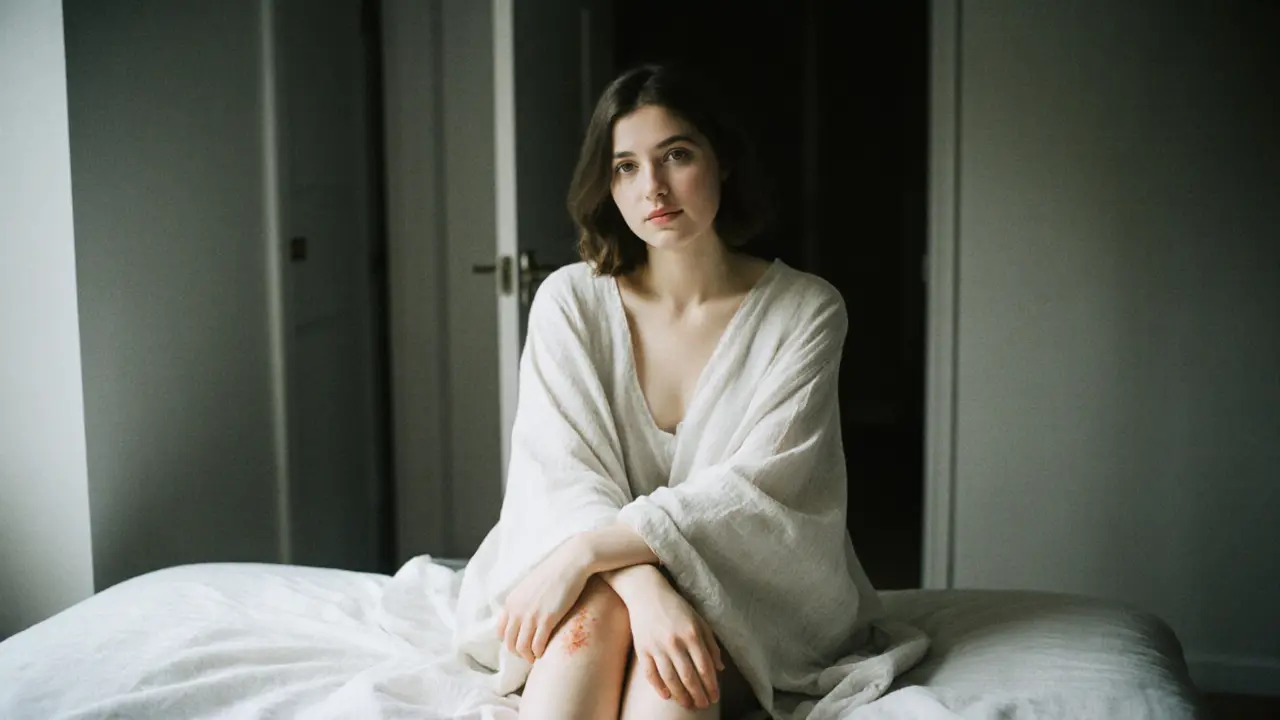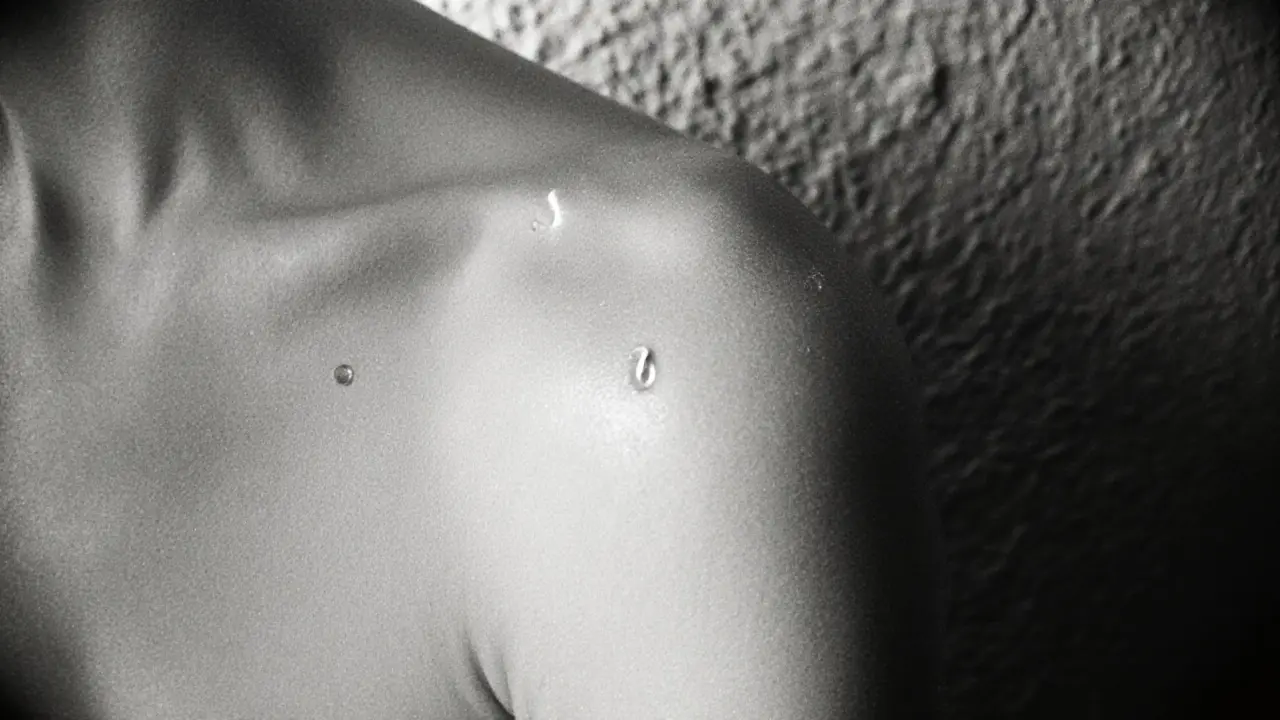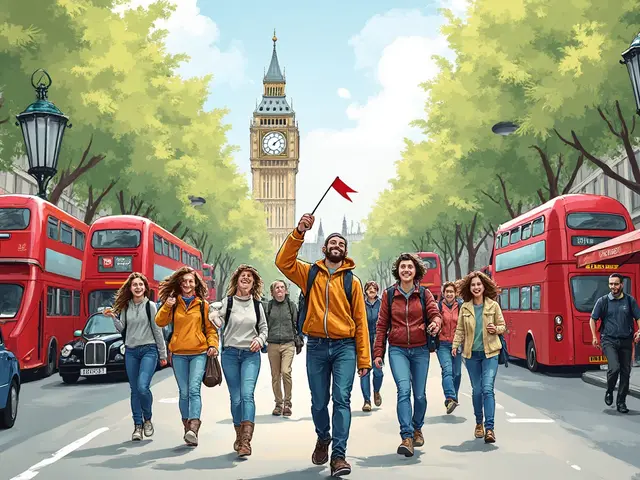Erotic photography isn’t about shock value or cheap thrills. It’s about capturing the raw, quiet moments of human connection - the curve of a shoulder in soft light, the tension in a clenched fist, the stillness after a sigh. People often confuse it with pornography, but the difference is in the intention. Pornography sells access. Erotic photography invites reflection.
What Makes a Photo Erotic?
An erotic photo doesn’t need nudity to be powerful. A pair of hands holding a coffee cup, the way fabric clings to skin after rain, or the shadow of a body against a white wall - these can carry more sensuality than full exposure. The key is suggestion. It’s what’s left out that lingers in the mind.
Think of the work of Robert Mapplethorpe. His black-and-white portraits of nude men and women weren’t about arousal alone. They were about form, power, and identity. Or Sally Mann’s images of her children - intimate, tender, and deeply unsettling because they challenge what we think we’re allowed to see. These aren’t just pictures. They’re conversations.
When a photo becomes erotic, it’s usually because it reveals vulnerability. Not the kind that’s performed for the camera, but the kind that slips through when the subject forgets they’re being watched. That’s the moment photographers chase: the unguarded breath, the half-smile that wasn’t planned, the way someone lets their guard down just for a second.
The Line Between Art and Exploitation
Every year, new photographers try to push boundaries. Some succeed. Others cross into territory that feels invasive, not expressive. The difference often comes down to consent and context.
In 2023, a photo series by a rising artist in Berlin sparked global debate. The images showed women in various states of undress, all taken in public spaces without explicit permission. Critics called it voyeurism. Supporters said it captured ‘everyday sensuality.’ But the women in the photos hadn’t signed releases. Many didn’t even know they’d been photographed. That’s not art. That’s violation dressed up as aesthetic.
True erotic photography requires trust. The subject must feel safe, seen, and respected. It’s not about capturing someone’s body - it’s about capturing their humanity. That’s why so many professional erotic photographers work with models they’ve built relationships with over months or years. They don’t just shoot. They talk. They listen. They wait.
How It’s Done Right: Process and Practice
There’s no single formula, but there are patterns among photographers who’ve built lasting, ethical careers in this space.
- Pre-shoot conversations - Discuss boundaries, triggers, comfort levels. What’s off-limits? What feels empowering? Write it down.
- Control over the environment - Shoot in private, quiet spaces. Natural light is preferred. Avoid flashy setups. The goal is intimacy, not spectacle.
- Post-shoot review - Let the subject see the images before they’re shared. They should have the right to delete any shot they feel uncomfortable with, even after the session.
- Compensation and respect - Pay fairly. Treat the model as a collaborator, not a prop. Many top erotic photographers pay models more than commercial fashion shoots.
One photographer in London, known only as E. Vale, works exclusively with survivors of sexual trauma. She doesn’t use the word ‘model.’ She calls them ‘participants.’ Each session begins with a cup of tea and silence. No camera comes out until the person says they’re ready. Her work has been exhibited in galleries from Birmingham to Tokyo. Not because it’s provocative - but because it’s honest.

Technology’s Role: Filters, AI, and the Loss of Authenticity
Today, AI tools can smooth skin, reshape bodies, and even generate entirely fictional nude images from text prompts. Some photographers use them to enhance lighting or remove distractions. Others use them to create fantasies that never existed.
The problem? When every curve is digitally perfected, the humanity disappears. Real erotic photography thrives on imperfection - the stretch mark, the scar, the uneven tan line. These aren’t flaws. They’re proof of life.
In 2024, a study by the University of Brighton found that viewers responded more emotionally to images with visible imperfections than to AI-enhanced versions. The brain recognizes authenticity. It responds to real skin, real sweat, real emotion. Synthetic perfection feels cold. It doesn’t move us.
That’s why many collectors and galleries now prioritize film over digital. Film captures texture. It holds grain. It doesn’t erase. It remembers.
Why This Matters Beyond the Lens
Erotic photography is more than a niche genre. It’s a mirror. It reflects how we see ourselves, how we’ve been taught to feel about our bodies, and what we’re willing to let others see.
In cultures where nudity is taboo, erotic photography becomes an act of resistance. In places where bodies are commodified, it becomes a reclaiming of agency. When a woman looks at a photo of herself and says, ‘That’s me - not perfect, not polished, but real,’ that’s power.
It’s also a tool for healing. Therapists in the UK and US have started using curated erotic photography in body image therapy. Patients who struggle with shame or disconnection from their bodies often find comfort in seeing their own experiences reflected - not idealized, but honored.

Where to Find Ethical Erotic Photography
Don’t scroll through social media feeds looking for ‘hot’ images. That’s not where the real work lives. Instead, look for:
- Independent galleries that feature photographers by name, not just hashtags
- Photography books published by small presses - titles like Body as Archive or Stillness in Motion
- Exhibitions at universities or arts councils, especially those tied to gender studies or visual anthropology
- Platforms like 500px or Behance, filtered by ‘fine art’ and ‘nude’ - avoid tags like ‘sexy’ or ‘hot’
Support photographers who list their process, credit their models, and explain their intent. If a portfolio doesn’t tell you why the images were made - only how they look - walk away.
The Future of Erotic Photography
The next generation of photographers isn’t trying to shock. They’re trying to heal. They’re documenting queer bodies, aging skin, disability, and non-binary identities with the same reverence once reserved for classical nudes.
There’s a shift happening. The old idea of eroticism as male fantasy is fading. New voices are redefining desire - not as something to be consumed, but as something to be shared, understood, and respected.
It’s no longer about how much skin is shown. It’s about how much truth is revealed.
Is erotic photography the same as pornography?
No. Pornography is designed to arouse quickly and directly, often with explicit sexual acts. Erotic photography focuses on mood, emotion, and suggestion. It invites contemplation, not instant gratification. One is transactional; the other is transformative.
Can erotic photography be legal but still unethical?
Absolutely. A photo can be legal - meaning consent was signed - but still feel exploitative if the power dynamic was unequal, the subject was pressured, or the context was misleading. Ethics go beyond the law. They’re about respect, dignity, and ongoing consent.
Do you need formal training to do erotic photography?
Not technically, but understanding lighting, composition, and human emotion helps. More importantly, you need emotional intelligence. The best erotic photographers aren’t the ones with the most expensive gear - they’re the ones who know how to sit quietly, listen deeply, and wait for the moment to unfold.
Is it okay to photograph a partner erotically?
Only if both people are fully on board, with no pressure, and have agreed on how the images will be used - even if just for private viewing. Many couples start with this, but it can become a source of tension if boundaries aren’t clearly set and respected afterward. Communication before, during, and after is non-negotiable.
Why do some people feel uncomfortable with erotic photography?
It often taps into deep cultural taboos around nudity, sexuality, and control. Many people were raised to believe the body is something to hide, not to celebrate. Erotic photography challenges that. It doesn’t ask you to like it - just to consider why you feel the way you do.
Can erotic photography be empowering for the subject?
Yes, when done with care. Many people describe the experience as liberating - seeing themselves through a lens that honors their body without judgment. It’s not about being ‘sexy’ for others. It’s about reclaiming ownership of your own image.
Final Thoughts: Seeing Beyond the Surface
Erotic photography doesn’t ask you to look harder. It asks you to look differently. To see the body not as an object, but as a story. To recognize that desire isn’t just physical - it’s emotional, spiritual, and deeply human.
The most powerful images aren’t the ones that make you catch your breath. They’re the ones that make you pause - and wonder.




